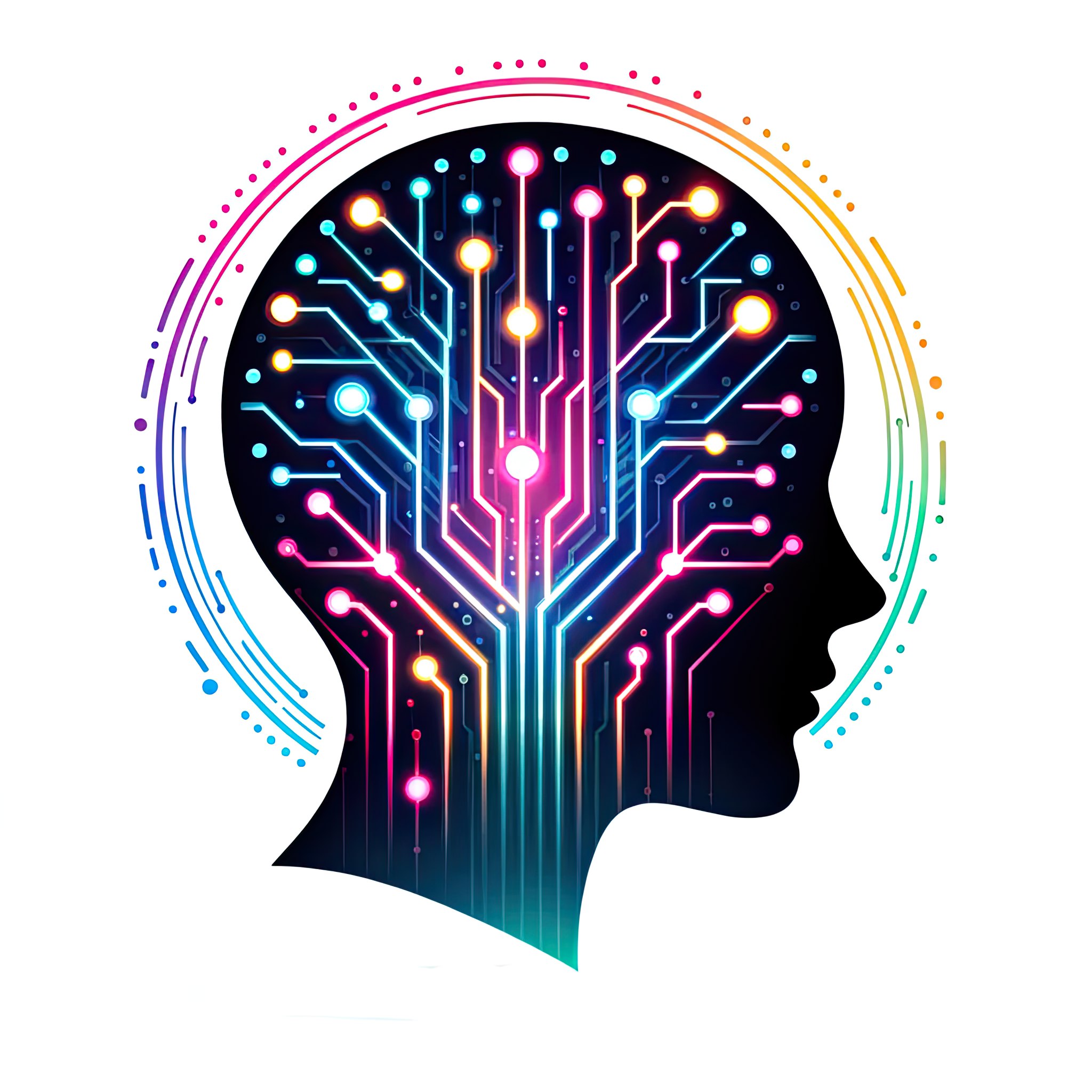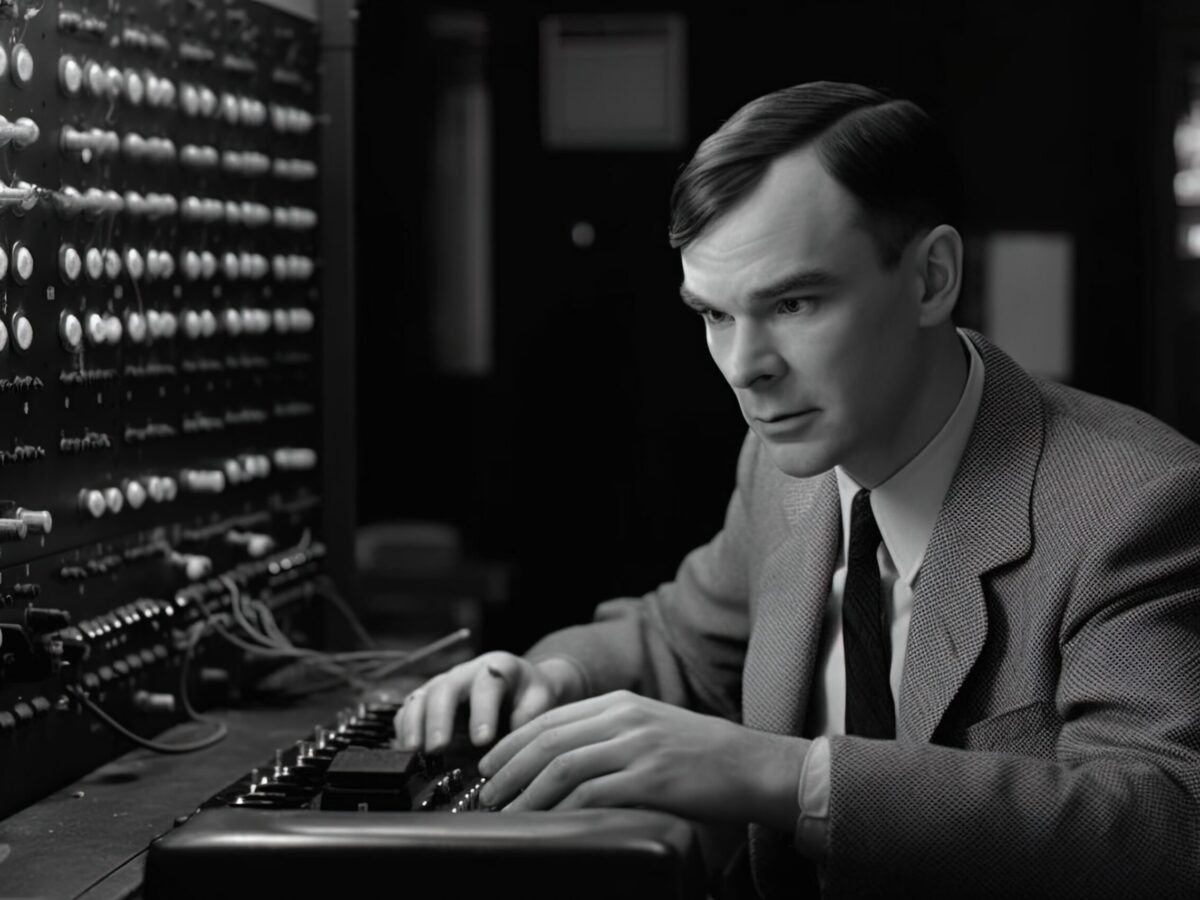Alan Turing was a British mathematician, logician, and codebreaker who is best known for his significant contributions to the decryption of German codes during World War II and for his understanding of artificial intelligence. During the war, he worked on the “Ultra” project at the Government Code and Cypher School at Bletchley Park, where he helped to decode German codes used for military communications. Turing was also an LGBTQ activist and in 1952 he was arrested for homosexuality, which was then considered a crime in the United Kingdom. He was forced to choose between prison and “treatment” with estrogen hormones, and he chose the latter. His career and private life were destroyed due to the persecution of his homosexuality. He died in 1954 under mysterious circumstances, likely suicide. In 2009, British Prime Minister Gordon Brown issued a public apology for the treatment Alan Turing received due to his homosexuality.
Alan Turing began to take interest in artificial intelligence in the 1930s, when he published his paper “On Computable Numbers, with an Application to the Entscheidungsproblem” in 1936, where he presented the idea of a “universal machine” capable of performing any calculation that a human could do. This idea was later developed into the Turing model of a computer, which became the foundation of data processing and AI. Alan Turing developed his ideas on artificial intelligence primarily based on mathematics and logic. The idea of the Turing Test was born in 1950, when Alan Turing published a paper titled “Computing Machinery and Intelligence” in which he proposed a way to determine if a machine can be considered “intelligent”. In this paper, Turing proposed an imaginary experiment, called the “Turing Test”, in which an examiner interacts with an entity (which can be either a human or a machine) through a series of written questions and answers. The examiner does not know if he is interacting with a human or a machine and the entity’s task is to convince the examiner that it is a human. If the examiner is unable to distinguish it, the machine is considered “intelligent”. The Turing Test was designed as a way to determine if a machine is capable of showing intelligent behavior similar to that of humans. The idea behind the test is that intelligence cannot be defined precisely, but can be demonstrated through observation of behavior. The Turing Test has been criticized because it does not take into account the substantial differences between human intelligence and artificial intelligence, and because it is based on a relative definition of intelligence. Furthermore, there have been developments in natural language processing and artificial intelligence that have allowed systems to pass the Turing Test in some circumstances. The first known instance of a machine passing the Turing Test was in 1966, when a computer program called ELIZA, developed by Joseph Weizenbaum at MIT, was able to convince some examiners that they were interacting with a human during a simulation of the Turing Test. However, it is important to note that ELIZA did not have true artificial intelligence, but only used a simple keyword-based response algorithm to generate responses. Since then, there have been other instances of machines passing the Turing Test in various simulations, but most experts agree that no machine has yet passed the test satisfactorily and that current AI is not yet at the level of human intelligence. There are many technical and philosophical challenges in asserting whether a machine passes or fails a human intelligence test and the debate is still ongoing. Despite its limitations, the Turing Test has been an important contribution to understanding artificial intelligence and has inspired further research and debates on the topic. It is still one of the most important and debated issues in AI.
Alan Turing did not have the opportunity to study and use electronic computers as these were created after his death. During his life, he mainly worked with mechanical calculators and typewriters, which were used to decode German codes during World War II. However, his ideas about data processing and artificial intelligence were so advanced that they inspired later developments in data processing and AI, which led to the creation of the first electronic computers.
All images and all text in this blog were created by artificial intelligences

